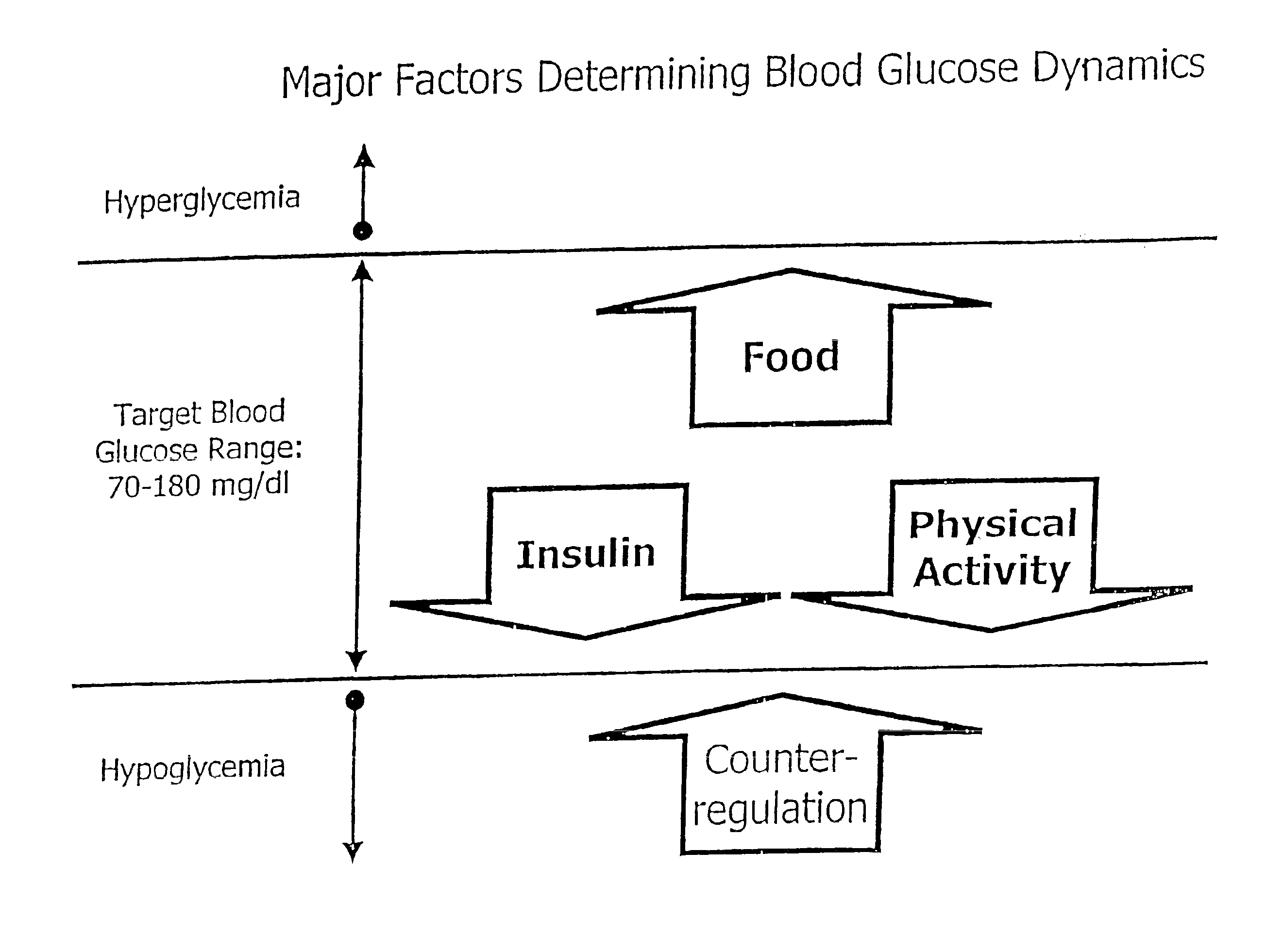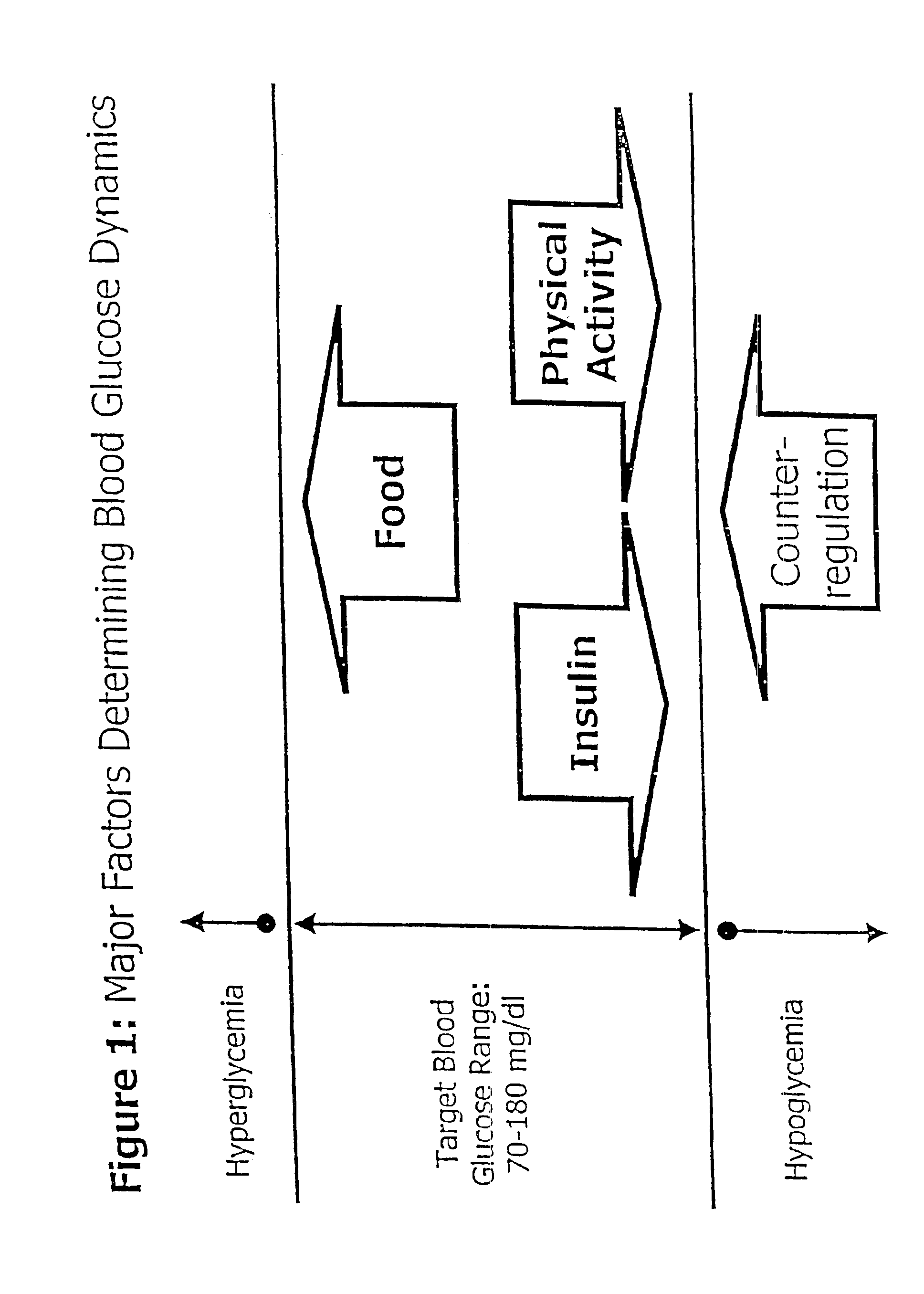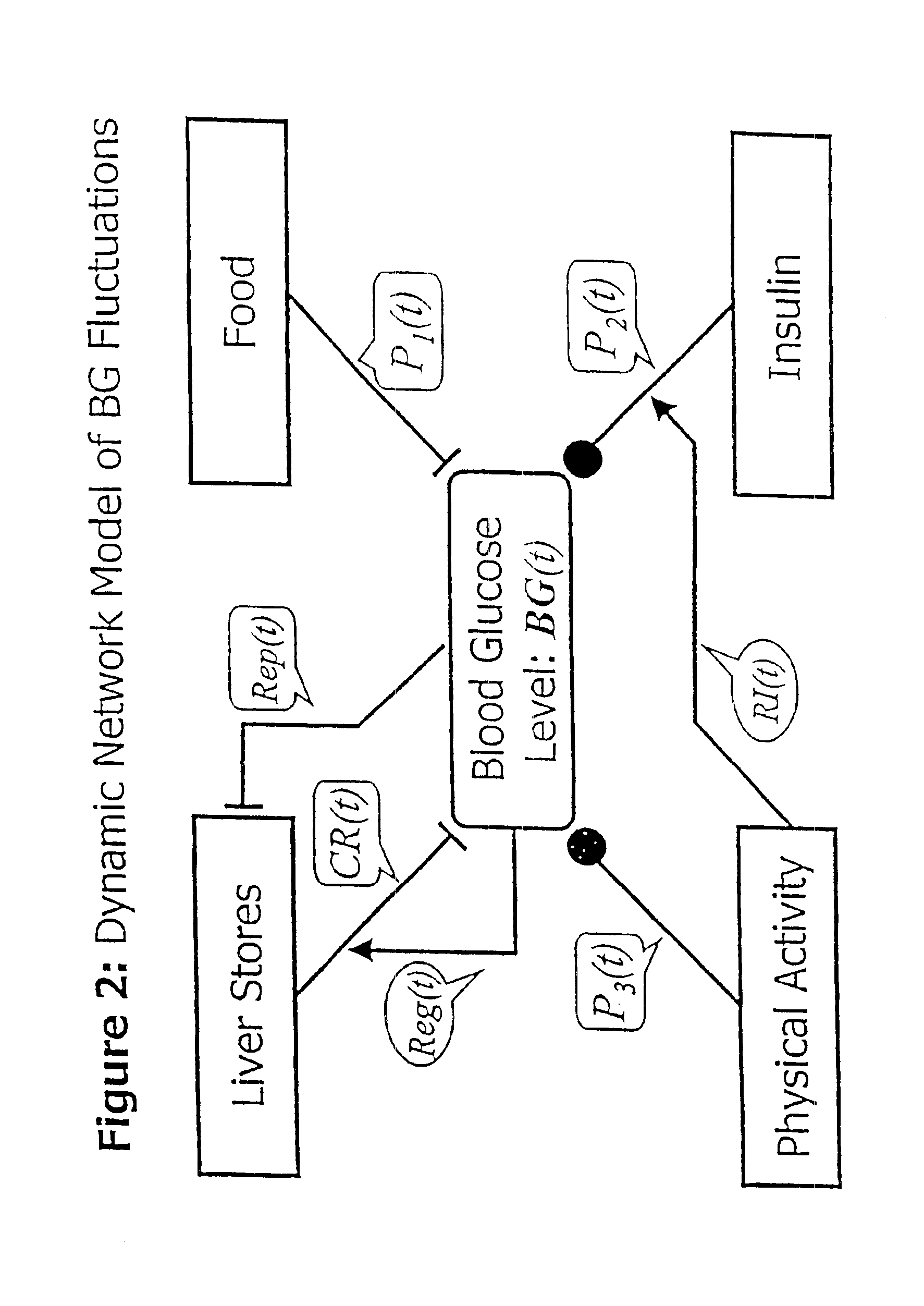Method and apparatus for predicting the risk of hypoglycemia
a hypoglycemia and risk technology, applied in the field of hypoglycemia risk prediction methods and apparatuses, can solve the problems of death, inability to accurately and reliably control external bg, and disruption of internal self-regulation, so as to improve glucose control and reduce autonomic reactivity
- Summary
- Abstract
- Description
- Claims
- Application Information
AI Technical Summary
Benefits of technology
Problems solved by technology
Method used
Image
Examples
example 1
Dynamic Network Model of BG Fluctuations During Controlled Hvperinsulinemic Clamp
[0104]As a first step to the validation of the general dynamic network presented in FIG. 2, the following laboratory study was conducted. Forty subjects suffering from T1DM for at least two years and taking insulin since the time of diagnosis were admitted to the University of Virginia Central Clinical Research Center. There were 16 males and 24 females, with mean age 35.5 years (SD=8.1), mean duration of disease 16.9 years (SD=9.6), mean insulin units / day 42.0 (SD=15.5), and mean glycosylated hemoglobin 8.5% (SD=1.7).
[0105]During the night before the study, BG was maintained between 5.6-8.3 mmol / L, with intravenous regular human insulin as per a previously published insulin infusion protocol. See Bolli, et al., “A reliable and reproducible test for adequate glucose counter-regulation in type 1 diabetes mellitus,”Diabetes 33: 732-37 (1984). Subjects were given dinner and a bedtime snack the evening befo...
example 2
Clinical Validation of the Forecast of Hypoglycemia
[0113]A clinical study can be performed, with the following procedure, to further validate the forecast of hypoglycemia. In such a study, twenty subjects will be recruited who meet the following inclusion criteria: having T1DM, taking insulin since the time of diagnosis, and routinely performing SMBG with a meter more than twice daily. All participants will be using insulin pumps to control their diabetes, their age will be between 18 and 30 years, and their HbA1c, will be below 90 / o. Subjects with obvious autonomic neuropathy (i.e., absence of RSA as defined below) will be excluded, as the relationship between their HRV and low BG may not be useful in the predetermined bio-mathematical routines of the invention. Subjects between 18 and 30 years of age will be selected since they are adults who presumably have a relatively short diabetes duration and relatively low likelihood of cardiac, renal, neurological, or kidney complications....
PUM
 Login to View More
Login to View More Abstract
Description
Claims
Application Information
 Login to View More
Login to View More - R&D
- Intellectual Property
- Life Sciences
- Materials
- Tech Scout
- Unparalleled Data Quality
- Higher Quality Content
- 60% Fewer Hallucinations
Browse by: Latest US Patents, China's latest patents, Technical Efficacy Thesaurus, Application Domain, Technology Topic, Popular Technical Reports.
© 2025 PatSnap. All rights reserved.Legal|Privacy policy|Modern Slavery Act Transparency Statement|Sitemap|About US| Contact US: help@patsnap.com



